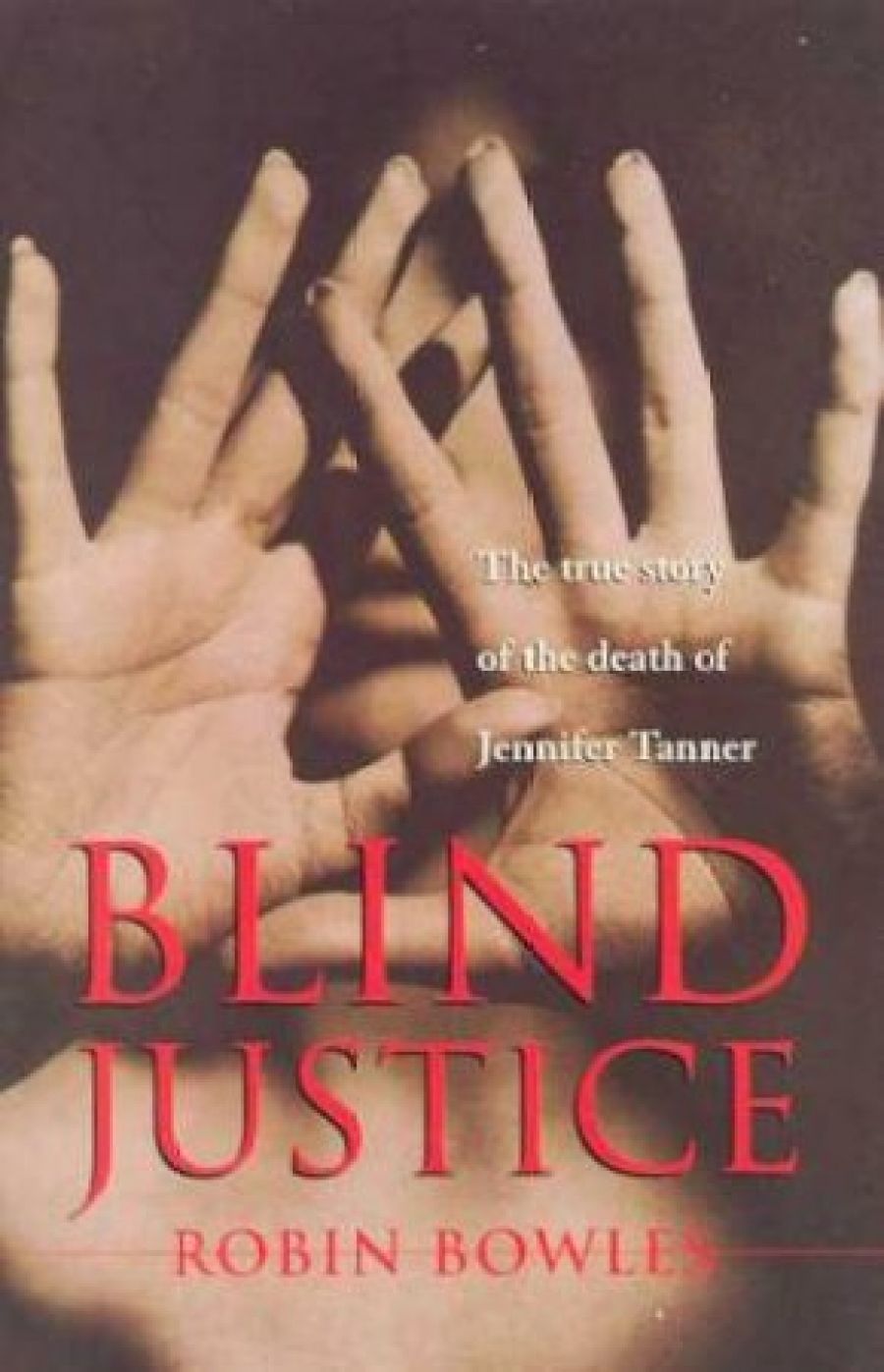
- Free Article: No
- Contents Category: True Crime
- Review Article: Yes
- Online Only: No
- Custom Highlight Text:
On the evening of 14 November 1984, the body of young mother and housewife Jennifer Tanner was found by her husband Laurie slumped on a sofa in their farmhouse at Bonnie Doon, a tiny hamlet near Mansfield, in Victoria’s high country. It looked as if she had shot herself: there was a gunshot wound in her forehead and a bolt-action .22 rifle between her legs. One of her hands was partly around the barrel. Uniformed police on the scene declared it a suicide, detectives were not called in, no photographs were taken, no forensic tests were done, the place was cleaned up next day – and that was that.
- Book 1 Title: Blind Justice
- Book 1 Biblio: Allen & Unwin, $17.95 pb, 419 pp
But then it was found she had two bullets in her brain, not one, and bullet-holes in each of her hands – classic ‘defence wounds’. So how does a woman who had no expertise with guns, who hated them, work the bolt to fire the second shot, with one already in her brain? She must have been very determined indeed. At the inquest it was said Jenny was depressed, but there was enough doubt and suspicion abroad for the Coroner to reach an open verdict. So, was she murdered, and was there a police cover-up? If so, who killed her, and why?
These questions would never have been followed up if the body of a transsexual, Adele Baily, had not been found in a mineshaft behind the Tanner farmhouse in 1996. A detailed article in the Sunday Age appeared, in which it was suggested the two deaths were connected, with Laurie’s brother, Detective Sergeant Denis Tanner, the common denominator. The article certainly sparked interest: a Homicide Squad task force was set up to reinvestigate the case, Jenny’s body was exhumed, a second inquest was called and Robin Bowles, a Melbourne company director, was so intrigued she gave up her day job to write a book about it. Blind Justice is Bowles’ quest for that most elusive of holy grails, truth.
The whole Tanner saga has all the ingredients of a TV mini-series, which doubtless it will soon become. The script writes itself – only the ending needs to be added. The head of the Homicide task force, Paul Newman, makes no bones about identifying Denis Tanner as a person of great interest in the case. It is asserted that Denis disliked his sister-in-law intensely, and that he feared she was planning to leave Laurie, taking a chunk of Tanner money with her. Denis had bailed out his brother once before, and – so the theory goes – wasn’t about to let the same thing happen again. And then there is the matter of his conflicting alibis on the night in question.
Denis Tanner is an interesting person in more ways than one. While Laurie comes across as a rather weak, if decent, man, Denis is the linchpin of the Tanner clan. Perhaps unexpectedly he agrees to talk at length to the author in the course of the second inquest, and it soon becomes clear that her opinion of this so-called ‘bogeyman’ is mixed. He is ice-cool, tight-lipped and intimidating, every inch a tough, taciturn cop, but she develops a grudging respect for his strength under pressure and his fierce desire to protect himself and his family. Guilty or not, he is an enigmatic and larger-than-life figure.
The one thing that is indisputable, judging from Bowles’s very detailed account, is that the first investigation into Jenny’s death was completely botched by all concerned. You make allowances for simple country coppers, but the level of ineptitude in this case is truly breathtaking. Of course it happened a long time ago, and as well as vital evidence having been conveniently lost – even the bullets and cartridge cases have disappeared – everyone’s memory is hazy to the point of non-existent. You would think this was the most trivial event that ever occurred in Bonnie Doon. Questioned by the Coroner, every participant trotted out the party line ad nauseam: ‘I don’t recall.’
There is such a mass of detail in this comprehensively researched book that it is not possible to summarise its key findings in a few paragraphs. The Coroner had some harsh words to say about the timing of its publication (the inquest was still in progress), but anything that sheds light on the events of that night is to be welcomed. Few of the witnesses seem able to do that. On the matter of a police cover-up (it is alleged that there is evidence that a policeman was stood over to doctor his report, and of other improper conduct), there may well be, but for incompetence, not murder. No one seriously believes Jenny Tanner shot herself anymore, but according to Bowles the chances of any charges being laid are nil. Evidence is contradictory and circumstantial, and the waters have become too muddied. And what about the transsexual, Adele Baily? What about her indeed. That’s another one for the too hard basket.


Comments powered by CComment